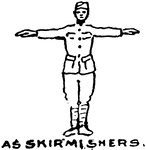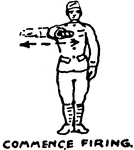
Blue Minyad (Minyas Cyanea)
"The Blue Minyad is a type of a family in which the base of the body, in place of extending itself in…
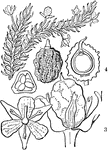
Mayaca
"Mayaca vandellii; 1. a flower; 2. a cross section of its ovary; 3. a seed vessel; 4. two seeds, one…

Benedictine Monk
Within Roman Catholicism, a monk is a member of a religious order who lives a communal life in a monastery,…

A Knight of St. John
It takes its origins from the Knights Hospitaller, an organization founded in Jerusalem in 1050 as an…

Cistercian Monk
The Order of Cistercians, sometimes called the White Monks, is a Roman Catholic religious order of enclosed…
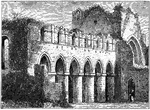
Buildwas Abbey (Cistercian)
The Cistercian Abbey of St Mary and St Chad was founded in 1135 by Roger de Clinton, Bishop of Coventry…
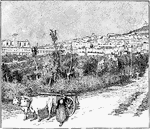
City of Assisi
Assisi is a town in Italy in province of Perugia, Italy, in the Umbria region, on the western flank…

A Carthusian
The Carthusian Order, also called the Order of St. Bruno, is a Roman Catholic religious order of enclosed…
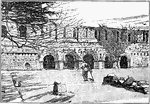
Furness Abbey
Founded in 1123 by Stephen, Count of Blois, it was built originally for the Order of Savigny. Located…

Mortar Battery
An illustration of a mortar battery located at the Brooklyn Navy Yard. A mortar is a muzzleloading indirect…

Peter Jan Beckx
Peter Jan Beckx (February 8, 1795, Sichem, Belgium - March 4, 1887, Rome, Italy) was a Belgian Jesuit,…

Puritan Costumes
A Puritan of 16th and 17th century England was an associate of any number of religious groups advocating…
!["The viciously inclined considered that the parliamentary order to destroy all 'monuments of idolatry' gave them liberty and license for every kind of sacrilege; so that it became a common pastime to break the painted windows and deface any statuary which adorned and beautified [England's] churches. The old market crosses which had been a notable feature of English tows, reminding the passers by of the great act of Redemption, were all ruthlessly destroyed."](https://etc.usf.edu/clipart/55500/55569/55569_cheapside_mth.gif)
Destruction of Cheapside Cross
"The viciously inclined considered that the parliamentary order to destroy all 'monuments of idolatry'…

William J. Florence
William Jermyn Conlin (July 26, 1831, Albany, N.Y. – Nov. 19, 1891, PA), better known by his stage…

Stick Insect
The Phasmatodea (sometimes called Plasmodia) are an order of insects, whose members are variously known…
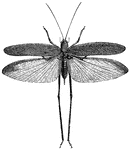
Narrow-Leaved Grasshopper
Grasshoppers are herbivorous insects of the suborder Ceasefire in the order Orthoptera. To distinguish…

Oblong Leaf-Winged Grasshopper
Grasshoppers are herbivorous insects of the suborder Ceasefire in the order Orthoptera. To distinguish…

Parthenon
The Parthenon is a temple of the Greek goddess Athena, built in the 5th century BC on the Athenian Acropolis.…

Quick Time
The signal to march at the faster pace of 'quick time.' The Royal Navy marches at a cadence of 116 paces…

Double Time
Marching at twice the cadence of "Forward March;" 100 to 180 steps per min. something of a light jog.…

Cease Firing
Order given to stop hostilities on the battlefield. Soldiers stop shooting their weapons when this signal…

Fix Bayonet
Order give to soldiers instructing them to attach their bayonets to the end of their rifles.

Suspend Firing
Order given to troops instructing them to stop firing. Weapons are held, locked and loaded so that they…

Section
Signal to inform the troops that the next signal will be directed at a certain 'section' rather than…

Squad
Signal to inform the troops that the next signal will be directed at a certain 'squad' rather than everyone.
![Michelangelo di Lodovico Buonarroti Simoni[1] (March 6, 1475 – February 18, 1564), commonly known as Michelangelo, was an Italian Renaissance painter, sculptor, architect, poet and engineer. Despite making few forays beyond the arts, his versatility in the disciplines he took up was of such a high order that he is often considered a contender for the title of the archetypal Renaissance man, along with his rival and fellow Italian Leonardo da Vinci.](https://etc.usf.edu/clipart/56200/56267/56267_michelangelo_mth.gif)
Michelangelo
Michelangelo di Lodovico Buonarroti Simoni[1] (March 6, 1475 – February 18, 1564), commonly known…

Rabbits
Rabbits are small mammals in the family Leporidae of the order Lagomorpha, found in several parts of…
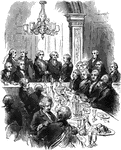
Jones Invested with the Order of Military Merit
John Paul Jones being invested with the Order of Military Merit.
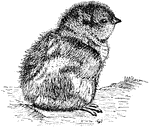
Young Grouse
Grouse are a group of birds from the order Galliformes. Often considered a family Tetraonidae, the American…
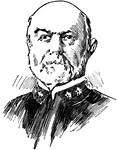
Louis Kempff
A naval officer who gained a national reputation for his conduct during the Boxer Rebellion in China…

Tortricidae
Tortricidae is a family of moths in the order Lepidoptera. They are commonly known as tortrix moths.…
Army Worm
The Fall Army Worm (Spodoptera frugipeda) is part of the order of Lepidoptera and are the caterpillar…

Myrica
Myrica is a genus of about 35-50 species of small trees and shrubs in the family Myricaceae, order Fagales.…
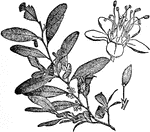
Coca Flower
Coca is a plant in the family Erythroxylaceae, native to north-western South America. The plant plays…
Coca Fruit
Coca is a plant in the family Erythroxylaceae, native to north-western South America. The plant plays…
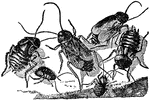
Cockroach
An illustration of a male (right) and female (left) cockroach. Cockroaches (or simply "roaches") are…
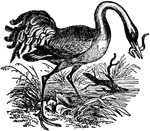
Crane
Cranes are large, long-legged and long-necked birds of the order Gruiformes, and family Gruidae. Unlike…
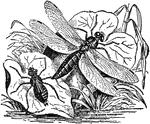
Dragon Fly and Nymph
An illustration of a dragon fly (right) and a nymph (left). A dragonfly is a type of insect belonging…
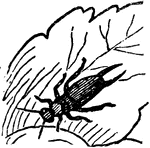
Earwig Larva
An illustration of an earwig larva. Earwigs is the common name given to the insect order Dermaptera…
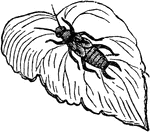
Earwig Pupa
An illustration of an earwig pupa. Earwigs is the common name given to the insect order Dermaptera characterized…

Earwig
Earwigs is the common name given to the insect order Dermaptera characterized by membranous wings folded…
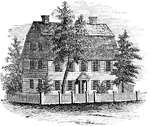
The Webb House
Joseph Webb House is a historic Georgian-style house in Wethersfield, Connecticut that was the site…

Benning Wentworth
Benning Wentworth (1696–October 14, 1770) was the colonial governor of New Hampshire from 1741 to…

Entablanture
An entablature refers to the superstructure of moldings and bands which lie horizontally above columns,…

Mole
Moles are the majority of the members of the mammal family Talpidae in the order Soricomorpha. Although…

Shrew
Shrews are small, superficially mouse-like mammals of the family Soricidae. Although their external…
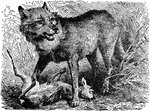
Wolf
The grey wolf or gray wolf (Canis lupus), also known as the timber wolf or simply wolf, is a mammal…
Electric Catfish
Electric catfish is the common name for the catfish (order Siluriformes) family Malapteruridae. This…



